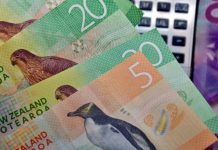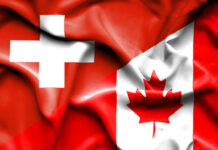Back in October, the Euro fell below parity with the US dollar. Since then, it has rebounded, but hasn’t returned to the levels at the start of the year. Naturally, the question is whether the pair will continue the trend higher, or turn around for another run at parity. And what does this mean for the Euro crosses?
One of the main drivers of the fluctuation in the shared currency last year is likely to be the theme for next year as well. At least through the first half. And that is the ECB’s unique approach to a unique challenge facing the Euro. Other currencies operate within a single economic jurisdiction, but the ECB has to balance the fiscal policy of 19 different countries. (20, next year, with the inclusion of Croatia.)
An uncertain path
The Euro’s underperformance this year was primarily driven by the ECB being slow to rate hike party. Even when it finally got around to raising rates, it was so far behind everyone else that the currency continued to be weaker until it became relatively clear that the Fed was getting ready to slow down its hiking. The Euro then appreciated, understanding that the ECB still has more room to keep tightening. The expectation is that the ECB will keep hiking through the first quarter, and then start selling bonds in March.
Meanwhile, the Euro’s main trading partners, the US and UK, are seen to be slowing down if not stopping rate hikes. The US is expected to slip into recession during the first half, with inflation coming down quicker than expected over the last couple of months. The UK’s inflation remains high, but it already is in a recession. Meanwhile, the EU is expected to manage modest economic growth in the first quarter, assuming there is no major disruption with energy supplies over the winter.
Beyond the uncertainty
March could be an inflection point for the Euro. By then, the worst of the winter is over, and the risk from a major energy disruption will be significantly reduced. The war in Ukraine is expected to reach an inflection point as well, since the geostrategic situation would be expected to normalize after the winter. Additionally, the ECB is set to take stock of the situation and decide on whether to double down on quantitative tightening, which is expected to start with the March meeting.
The pending issue is inflation. Through most of 2022, there was a wide gap between headline and core inflation, as Europe was particularly affected by the high cost of energy. However, crude prices came down at the end of the year. That implies less Euros were being sold to buy energy. If that trend continues, the downward pressure on the shared currency could be somewhat alleviated.
However, the higher costs have been filtering through to core inflation. While not as high as the headline number, it is still well over twice the ECB’s target. The issue is that this measure might be more ‘sticky’ than the headline figure. Which could keep pressure on the ECB to keep tightening, even if the economy starts to suffer. That could put Europe in line to follow the US and the UK into a recession, just later in the year.














